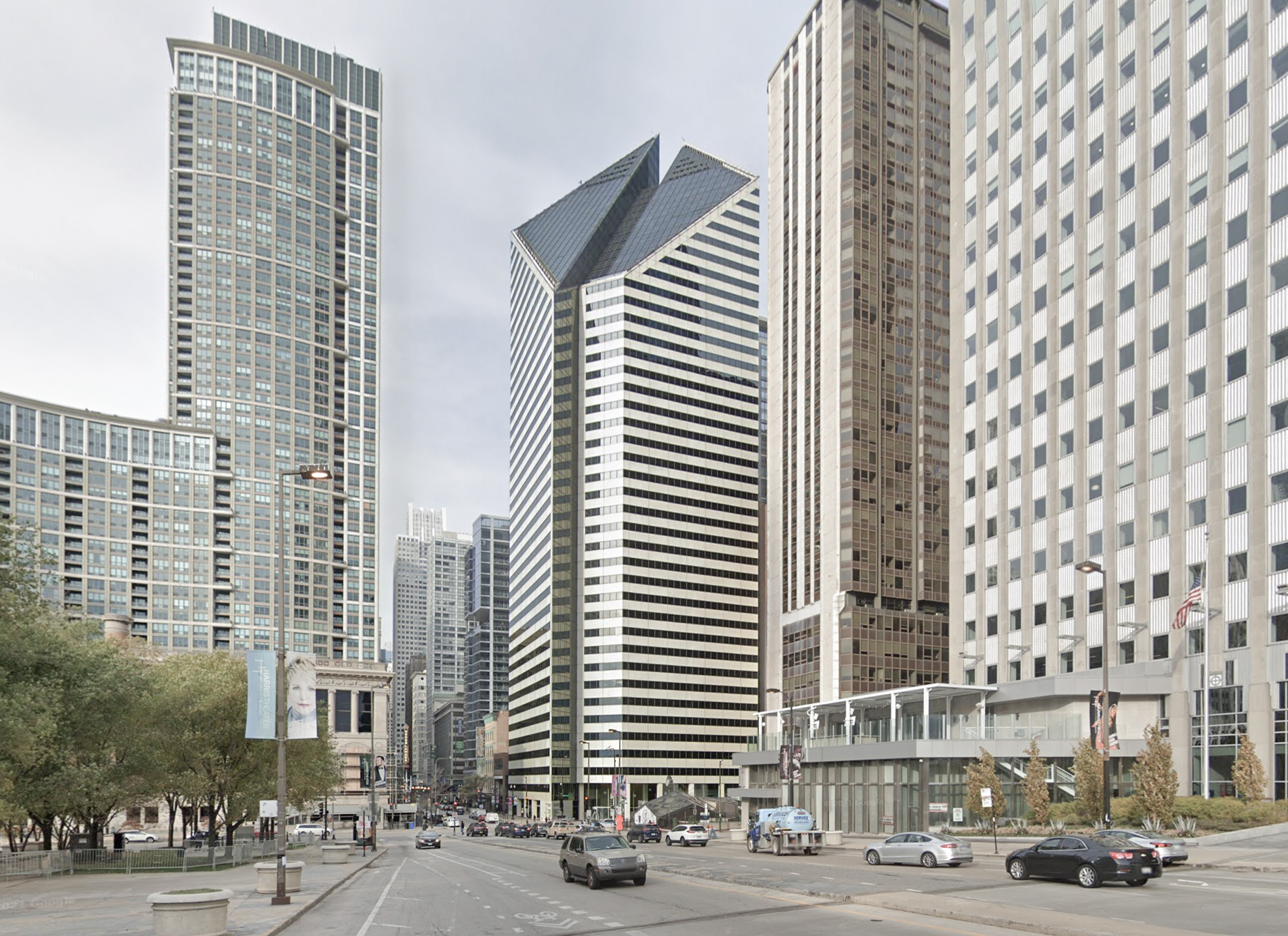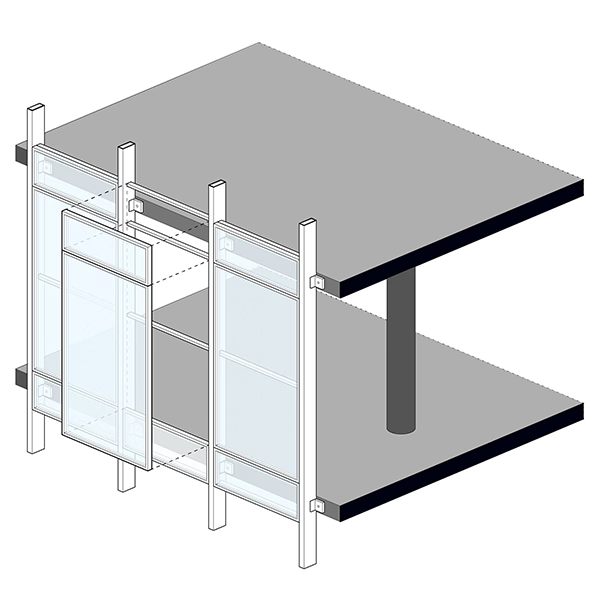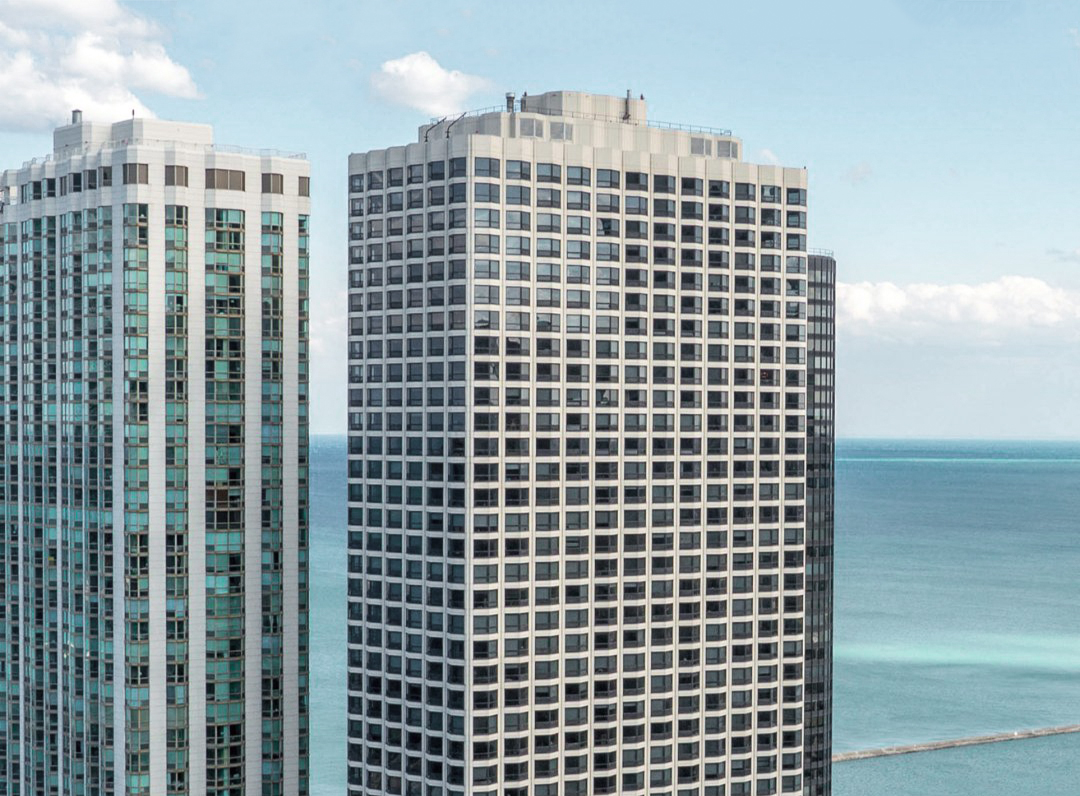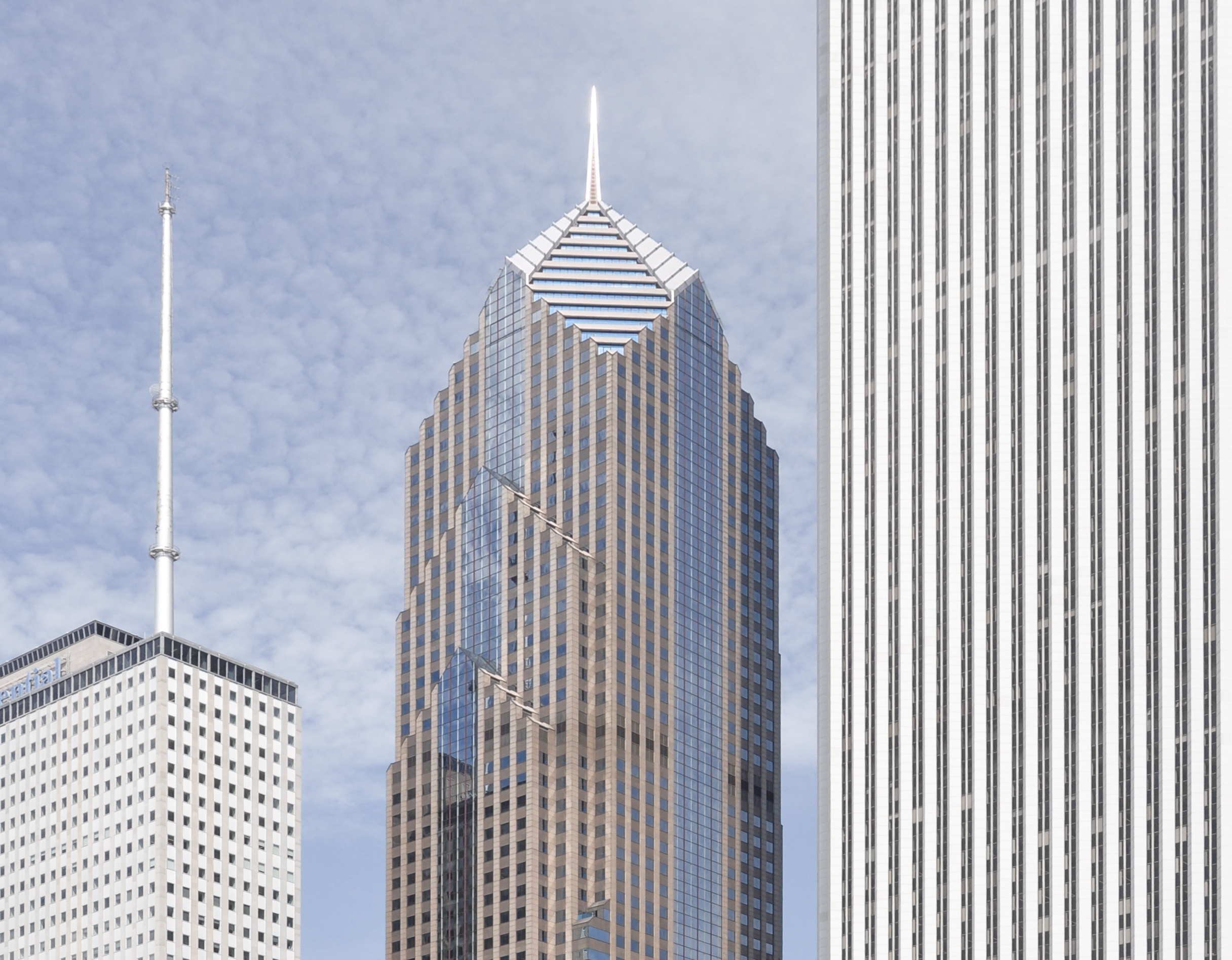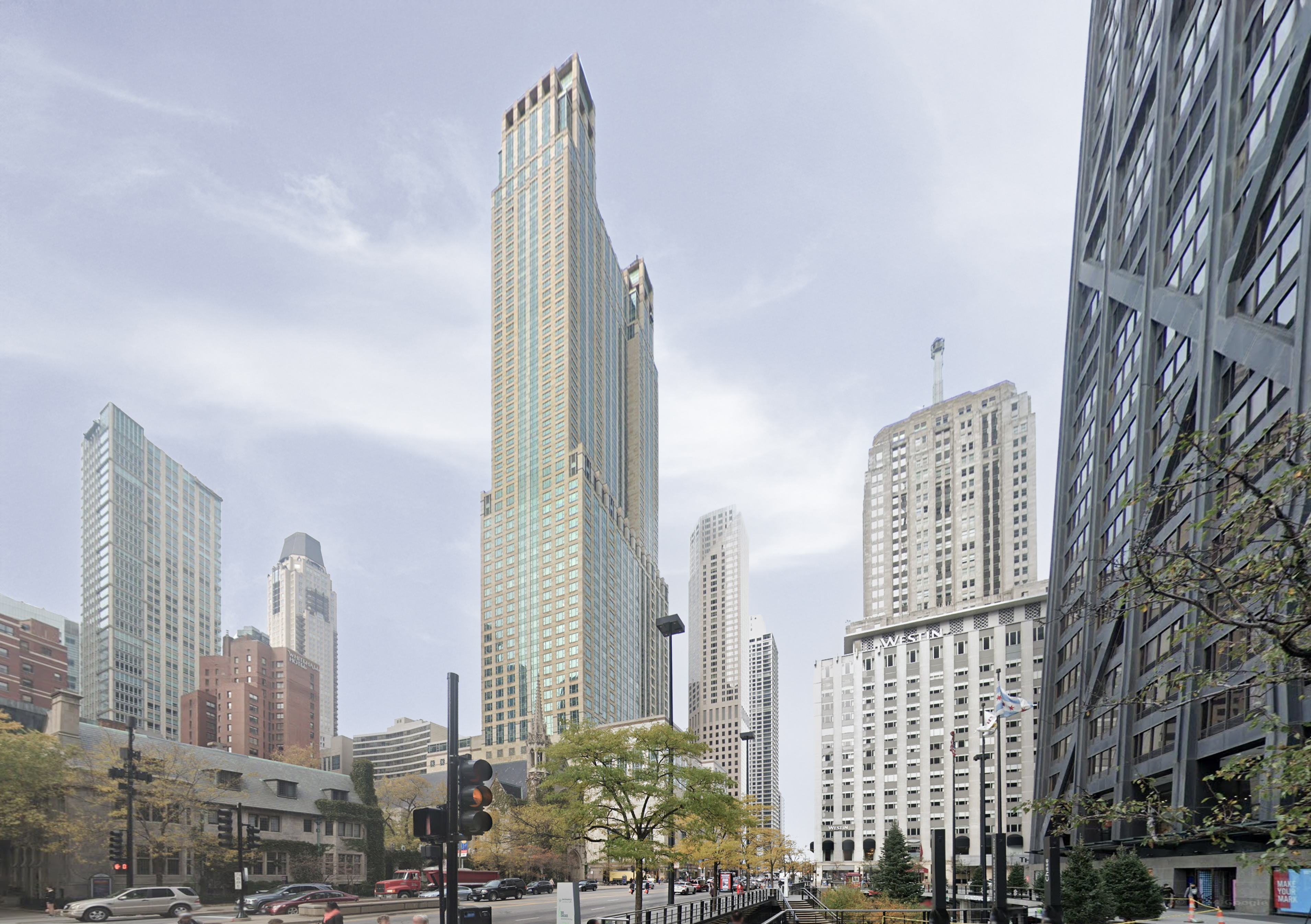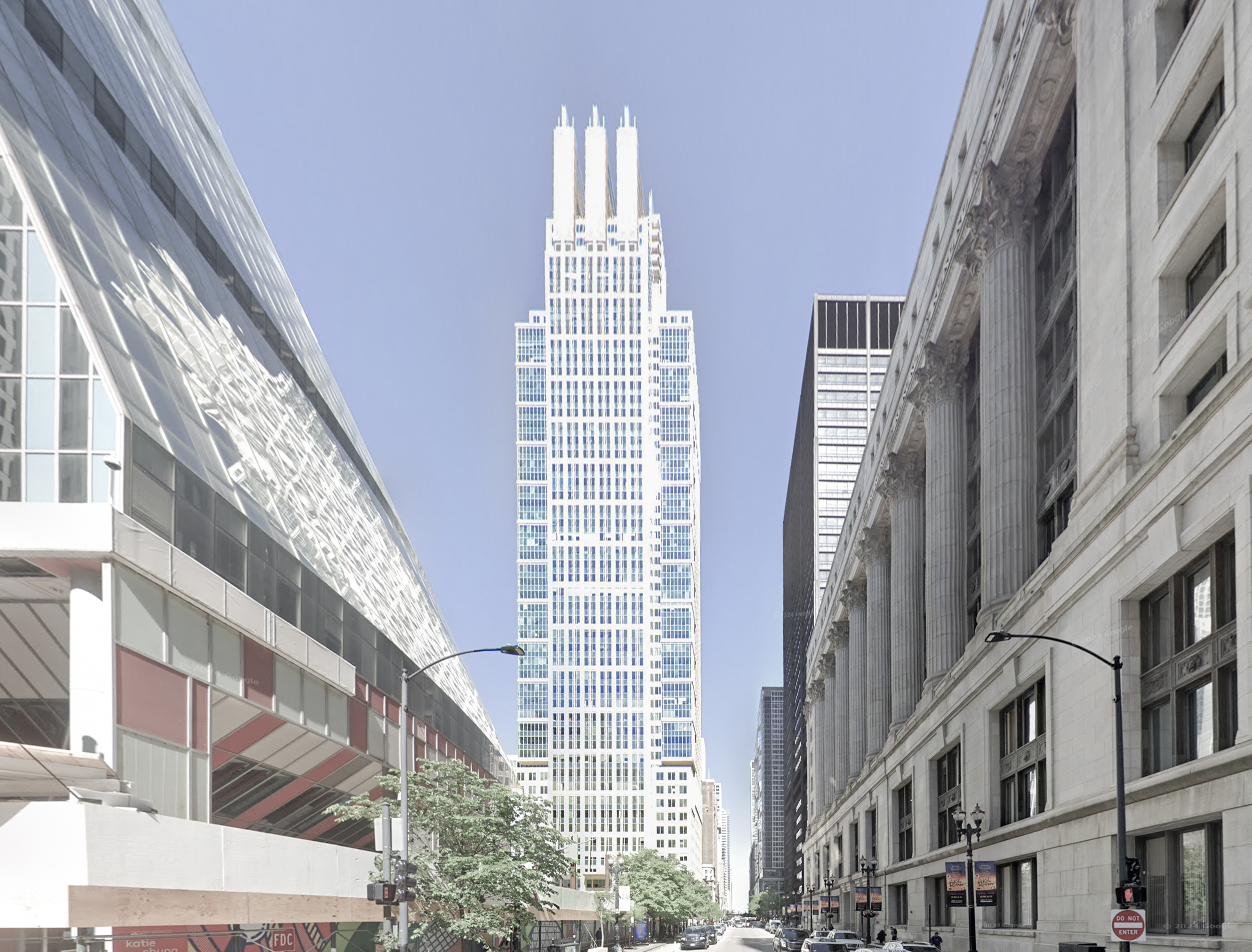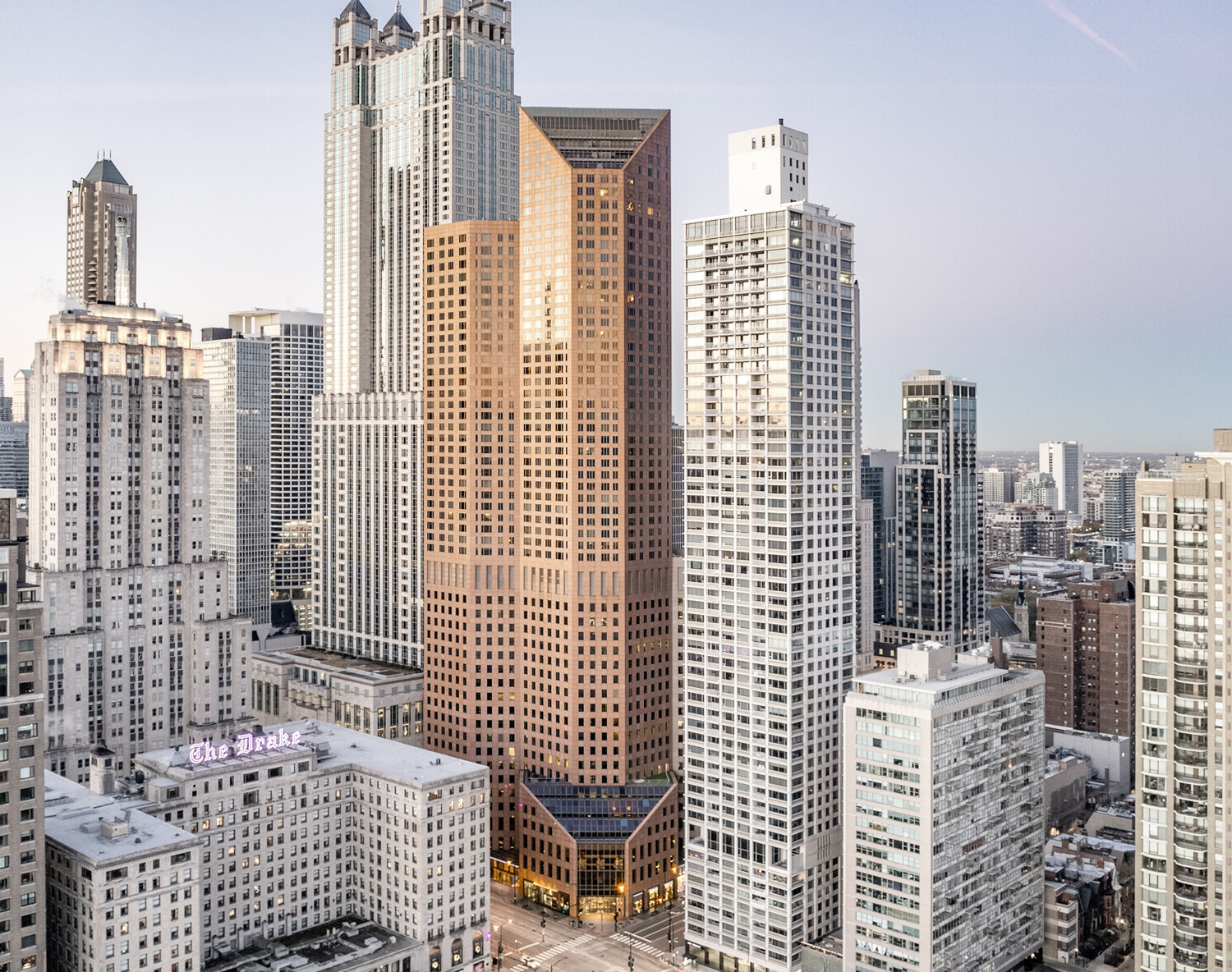The Crain Communications Building is a Postmodernist skyscraper designed by A.Epstein and Sons International, with Sheldon Schlegman as lead architect, and built between 1982 and 1984 in Chicago, IL.
Crain Communications Building is not the only name you might know this building by though. It is common for companies to want to attach their names to iconic buildings when they move in, or for the general public to come up with nicknames, and this one is no exception. The building has changed names several times over the years, and is also known as:
- 150 North Michigan Avenue from 1984 until this day.
- Associates Center between 1984 and 1990.
- Smurfit-Stone Building between 1990 and 2012.
- Stone Container Building between 1990 and 2012.
- Crain Communications Building from 2012 until this day.
Its precise street address is 150 North Michigan Avenue, Chicago, IL. You can also find it on the map here.
